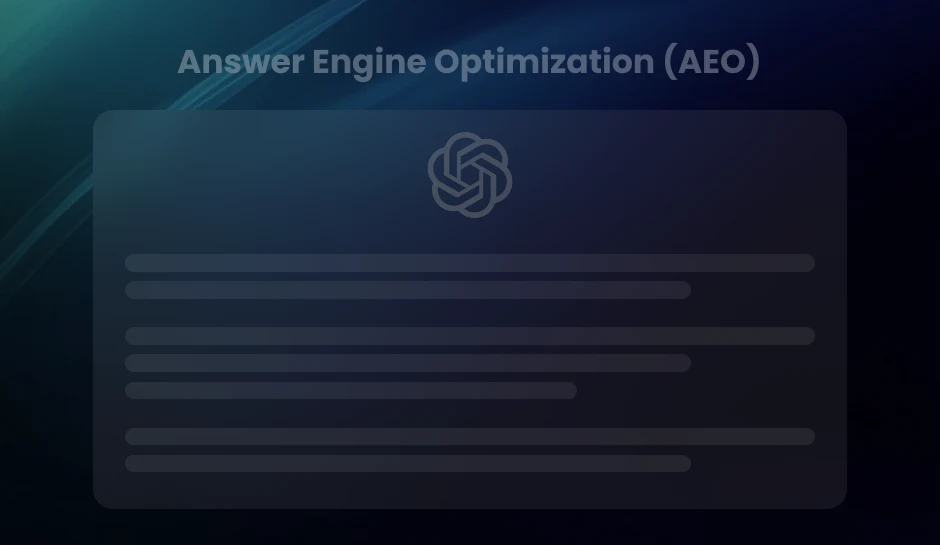
How B2B Companies Can Master Snowflake Cost Attribution
Cost visibility in Snowflake often takes a backseat as usage scales across teams. For B2B organizations, this can lead to budget inefficiencies and missed optimization opportunities. A structured cost attribution approach ensures your cloud spend aligns with ownership, performance, and strategic priorities.
You review your monthly Snowflake usage report and notice the costs have climbed again. The numbers are clear, but the source of the spend is not. Which teams are consuming the most compute? Which projects are responsible? More importantly, is this usage delivering measurable value?
If these questions are difficult to answer, you are not alone. Many B2B organizations scale quickly on Snowflake without a framework to track and assign costs. As usage increases, visibility fades, and cost optimization becomes guesswork.
Cost attribution gives you back control. By mapping Snowflake consumption to specific teams, products, or business functions, you create a foundation for financial accountability and strategic decision-making. You gain the ability to surface insights, reduce waste, and align cloud investments with business outcomes.
Why Cost Attribution Matters for B2B Companies
As your organization grows, so does your reliance on data. Teams launch virtual warehouses, automate pipelines, and scale workloads across departments. All of this drives innovation—but it also drives cost.
Without proper attribution, Snowflake spend quickly becomes a shared expense with no clear owner, leading to operational blind spots and inefficient decision-making. The result? You’re left reacting to higher-than-expected bills with limited insight into the underlying cause.
The Risks of Poor Visibility
Without cost attribution, B2B companies face several challenges:
- Unpredictable Budgets:
- Lack of Ownership:
- Delayed Decision-Making :
- Missed Optimizations:
Struggle to forecast costs or allocate budgets accurately across departments.
Fail to assign responsibility for resource consumption, leading to inefficiency.
Miss opportunities to connect cloud resources to business goals.
Overlook underutilized resources and cost-saving opportunities.
These challenges can significantly impact your organization’s ability to manage cloud costs effectively and maintain financial control. When you lack the visibility to understand where costs are coming from, it becomes difficult to make data-driven decisions or optimize your platform for greater efficiency. This is why cost attribution is critical, it provides transparency and empowers teams to manage their usage and spending proactively.
How Snowflake Charges You: A Quick Recap
Before you can attribute costs effectively, you need to understand how Snowflake structures its pricing. Snowflake operates on a pay-per-use model, where you are charged based on actual consumption across several key areas. This model is flexible and scalable, but it can quickly lead to unexpected costs if not properly managed.
Key Cost Components in Snowflake:
- Compute Costs:
- Storage Costs:
- Serverless Features:
- Data Transfer Costs:
- Cloud Services Costs:
Snowflake charges for the compute power you use. This is based on virtual warehouse size and the amount of time the warehouse is active. Larger warehouses and longer-running queries will naturally incur higher costs. You are billed for compute resources even when the warehouse is idle, so proper management of warehouse scaling is crucial.
Snowflake charges for both data storage and backup storage. The cost is calculated based on the amount of data you store in your databases and stages.
A. Active Storage: Data that you use regularly.
B. Historical Storage: Data that is infrequently accessed but still stored in Snowflake.
Managing the growth of your data and archiving older data efficiently can help control these costs.
Snowflake offers serverless features such as Snowpipe for continuous data loading and Materialized Views for optimized query performance. These services are charged based on the amount of data processed, so frequent use of Snowpipe or large data transformations can add up quickly.
Snowflake charges for data transfer between regions and cloud providers, as well as for loading and unloading data from external sources. If your workflows involve frequent data movement, this can become a significant portion of your monthly bill.
This includes the operational and management services that Snowflake provides, such as query compilation, metadata management, security, and data replication. While these services are generally included in your subscription, heavy use of advanced security features or high volumes of metadata operations can drive additional charges.
Pro Tip- Each of these components contributes to your overall spend, and without effective cost attribution, it’s nearly impossible to pinpoint where inefficiencies lie. A detailed understanding of how these costs accumulate helps you design a more accurate cost attribution model, identify optimization opportunities, and align your cloud spend with business priorities. .
Core Components of Snowflake Cost Attribution
To build a reliable attribution model, you need to start with the right technical components. Snowflake provides several features that help you capture usage data, apply labels, and tie activity back to business functions. When used effectively, these components become the foundation for cost transparency.
Query Tags
Query tags let you add metadata to SQL queries running in your Snowflake environment. You can define tags at the session level or within queries to reflect business-specific attributes.
How you can apply them:
- Tag queries by team (for example, team=finance)
- Identify activity by project (such as project=forecasting)
- Separate environments using tags like env=prod or env=dev
A consistent tagging approach across teams makes it easier to track query activity and link compute usage to specific business areas.
Object Tags
Object tags can be applied to Snowflake objects such as warehouses, databases, schemas, and tables. These tags help define ownership and purpose at the infrastructure level.
Examples of use:
- Assign warehouses to departments using ownership tags.
- Label databases by product line or team.
- Tag schemas to distinguish between shared and dedicated resources.
When integrated with reporting and monitoring, object tags allow you to identify usage trends and improve accountability across the platform.
Usage and Billing Views
Snowflake provides built-in system views through the ACCOUNT_USAGE and ORGANIZATION_USAGE schemas. These tables give you access to detailed billing and consumption data.
Key views include:
- WAREHOUSE_METERING_HISTORY for tracking credit use by virtual warehouse
- QUERY_HISTORY for analyzing query behavior and execution context
- STORAGE_USAGE for monitoring data volume over time
- LOGIN_HISTORY for auditing user access and activity
When you combine these views with tags, user roles, and resource metadata, you gain the ability to access credit usage at a highly granular level. This enables precise cost attribution across departments, teams, and business functions.
Absolutely — here is a more in-depth and comprehensive version of the section “Building a Cost Attribution Strategy” that provides both strategic context and practical guidance. This version is designed to inform B2B readers who are serious about operationalizing Snowflake cost attribution at scale.
Building a Cost Attribution Strategy
A strong cost attribution strategy is not just about tracking spend — it is about making Snowflake usage measurable, accountable, and aligned with your business objectives. This requires more than setting up tags and queries. It calls for governance, automation, and buy-in from both technical and non-technical teams.
Below is a step-by-step guide to help you build a strategy that is accurate, scalable, and organization-wide.
1. Define Attribution Units That Reflect Business Ownership
The first step is to identify which entities within your business should be accountable for Snowflake usage. These attribution units will form the basis of your cost model.
Examples of attribution units:
- Departments or functional teams (e.g., Engineering, Marketing, Data Science)
- Business units or product lines (e.g., Retail Banking, Risk Analytics)
- Project codes or initiatives that require cost tracking for ROI analysis
- Environments (e.g., Development, QA, Production)
Each credit consumed should eventually map back to one of these entities. The more closely these units align with financial and operational ownership, the more actionable your reporting will be.
2. Enforce Tagging Standards Across the Snowflake Environment
Standardized tagging is what enables precise cost segmentation. However, tagging only works if it is used consistently across users, teams, and workloads.
Steps to implement effective tagging:
- Create a tagging schema that includes fields such as team, project, env, and cost_center
- Define accepted values in a shared reference document or data dictionary
- Integrate tagging requirements into onboarding documentation, CI/CD pipelines, or user query templates
- Enforce validation rules through governance tools or pre-execution checks
Object tags should be applied to warehouses, databases, schemas, and tables. Query tags should be embedded in all programmatic and manual query executions. Lack of tagging directly leads to unallocated or misattributed costs.
3. Set Up Automated Workflows to Track and Process Usage Data
Attribution requires ongoing collection and transformation of usage data. Manual processes do not scale, especially in growing organizations.
Automate these processes using:
- Scheduled SQL jobs that extract data from Snowflake’s ACCOUNT_USAGE views
- Join logic to combine usage metrics with tags and user metadata
- Data pipelines (e.g., dbt, Airflow) to normalize, enrich, and store attribution-ready tables
Usage data should include compute credits consumed (WAREHOUSE_METERING_HISTORY), query-level metadata (QUERY_HISTORY), and storage trends (STORAGE_USAGE). Incorporating login and role history adds a layer of accountability for user behavior.
4. Build Centralized Dashboards for Visibility and Decision-Making
With attributed data in place, you can now make it actionable through visualization. Dashboards serve as a feedback mechanism and help both technical and business leaders understand usage patterns.
What to include in your dashboards:
- Total and per-unit credit consumption by team, project, or environment
- Trends over time to highlight growth, optimization, or unexpected surges
- Cost per business unit and return on data investment (e.g., cost vs. insights generated)
- Untagged or misattributed usage for operational cleanup
Tools like Tableau, Power BI, Sigma, and Snowsight allow you to democratize cost data across roles — from engineers to finance partners to product leads.
5. Review, Refine, and Govern on a Regular Cadence
Attribution is not a one-and-done process. Your strategy must evolve alongside organizational changes, new projects, and shifting infrastructure usage.
To maintain relevance and accuracy:
- Conduct monthly review sessions with stakeholders to validate data, escalate anomalies, and make optimization decisions
- Update tagging schemas and mappings as new teams or initiatives are introduced
- Set up alerts or reports for unusual spend or untagged usage
- Track adoption of tagging policies and identify teams that need support or re-training
Use these insights not just for financial reporting, but also to influence infrastructure scaling decisions, resource prioritization, and data platform efficiency.
Best Practices for Organization-Wide Rollout
- Start with a pilot in one department to prove value and refine implementation details
- Involve multiple functions — data platform teams, finance, engineering leads, and even procurement
- Build templates and documentation for tagging, dashboard navigation, and troubleshooting
- Create an attribution playbook for onboarding new teams and integrating new data sources
- Report both internally and externally to create transparency and encourage optimization behavior
A mature cost attribution strategy transforms Snowflake from a technical tool into a business-aligned platform. It empowers teams with insights, supports better forecasting, and lays the foundation for true cost accountability.
Certainly — here’s a clear, informative section on Sample SQL Queries and Dashboard Concepts, with practical examples that B2B teams can use to start implementing cost attribution in Snowflake. It includes both sample SQL and suggestions for dashboard visualizations relevant to business stakeholders.
Sample SQL Queries and Dashboard Concepts
Once your tagging and attribution model is in place, the next step is making the data accessible and actionable. This involves writing the right SQL queries to break down usage and building dashboards that deliver insights to the right stakeholders.
Below is a practical example and visualization ideas to help guide your implementation.
Sample SQL: Warehouse Usage by Tag
This query uses Snowflake’s ACCOUNT_USAGE views to attribute warehouse credit consumption based on object tags.
SELECT
wmh.WAREHOUSE_NAME,
wmh.START_TIME::DATE AS usage_date,
wt.TAG_VALUE AS team,
SUM(wmh.CREDITS_USED) AS total_credits
FROM
SNOWFLAKE.ACCOUNT_USAGE.WAREHOUSE_METERING_HISTORY wmh
JOIN
SNOWFLAKE.ACCOUNT_USAGE.TAG_REFERENCES wt
ON wmh.WAREHOUSE_ID = wt.OBJECT_ID
WHERE
wt.TAG_NAME = ‘team’
AND wmh.START_TIME >= DATEADD(‘day’, -30, CURRENT_DATE)
GROUP BY
wmh.WAREHOUSE_NAME,
wmh.START_TIME::DATE,
wt.TAG_VALUE
ORDER BY
usage_date DESC,
total_credits DESC;
This query aggregates compute usage by warehouse and team, enabling a direct line of sight into how different business groups consume Snowflake resources.
Dashboard Concepts
Once the data is available in an attribution-ready format, you can use BI tools (such as Tableau, Power BI, or Sigma) to build cost visibility for business leaders, engineers, and finance teams.
Here are a few dashboard ideas that provide clarity and drive action:
- Cost by Team:
- Usage Trends Over Time:
- Tag Coverage Report:
- Environment Split (Dev vs Prod):
A bar or stacked chart showing total compute credits consumed by each tagged team over time. Helps in identifying high-usage departments.
A time-series visualization of total Snowflake usage segmented by team or environment. Helps in forecasting and understanding seasonal patterns.
A breakdown of tagged vs. untagged queries and objects to monitor tagging adoption and governance gaps.
Visualize spend across different environments to track whether development workloads are consuming production-level resources.
Together, these queries and dashboards create a feedback loop between usage, ownership, and optimization — which is exactly what a strong cost attribution model should support.
Key Takeaways
- Cost attribution in Snowflake provides visibility into where your resources are being used and allows you to align costs with business priorities.
- By using tagging, you can ensure that every team, project, and business function is accountable for its consumption.
- Automating data collection and processing is crucial for scaling cost attribution and making real-time decisions.
- Dashboards are an essential tool for translating complex data into actionable insights that drive efficiency and optimize spending.
- Regular review and governance ensure that your cost attribution model remains accurate and effective as your organization grows.
Conclusion
Mastering Snowflake cost attribution isn’t just about controlling your cloud costs. It’s about creating a culture of financial accountability that enables smarter, more informed decisions across your organization. Whether you’re scaling operations, managing multiple departments, or trying to reduce unnecessary spend, a robust attribution model ensures that every dollar spent contributes to your bottom line and aligns with strategic goals.
The ability to see exactly where resources are being consumed empowers teams to make better decisions about infrastructure, project management, and even the future of your data operations. In short, cost attribution is an ongoing practice that supports both operational efficiency and financial discipline.
Are you ready to optimize your Snowflake usage and drive more value from your cloud investments? Let’s talk.
Our experts at DiGGrowth can help you implement a customized cost attribution strategy, ensuring better management and optimization of your Snowflake environment.
Reach out to us at info@diggrowth.com.
Ready to get started?
Increase your marketing ROI by 30% with custom dashboards & reports that present a clear picture of marketing effectiveness
Start Free Trial
Experience Premium Marketing Analytics At Budget-Friendly Pricing.

Learn how you can accurately measure return on marketing investment.
Additional Resources
Don’t Let AI Break Your Brand: What Every CMO Should Know
AI isn’t just another marketing tool. It’s changing...
Read full post postFrom Demos to Deployment: Why MCP Is the Foundation of Agentic AI
A quiet revolution is unfolding in AI. And...
Read full post postAnswer Engine Optimization (AEO): The New Frontier of SEO in 2025
As digital experiences continue to evolve, so does...
Read full post postFAQ's
Yes, cost attribution data can feed into internal chargeback models, enabling finance teams to allocate Snowflake expenses directly to departments, improving budget accuracy and fostering usage accountability across the organization.
Tagging should be reviewed monthly or quarterly to ensure compliance, especially as new teams and projects are onboarded. Consistent audits help maintain accuracy and avoid untagged resource consumption.
Yes, you can build queries or scripts to flag untagged queries, warehouses, or tables by checking for null tag values in usage logs, enabling quick remediation and policy enforcement.
Differences in tagging standards, lack of centralized governance, and inconsistent tool usage can hinder attribution accuracy. Establishing unified policies and automation helps maintain consistency across distributed teams.
Resource Monitors track credit usage and can alert on thresholds but do not directly attribute costs. However, combining them with tags and usage views enhances budget control and monitoring.
 Rahul Sachdeva
Rahul Sachdeva  Arpit Srivastava
Arpit Srivastava 

